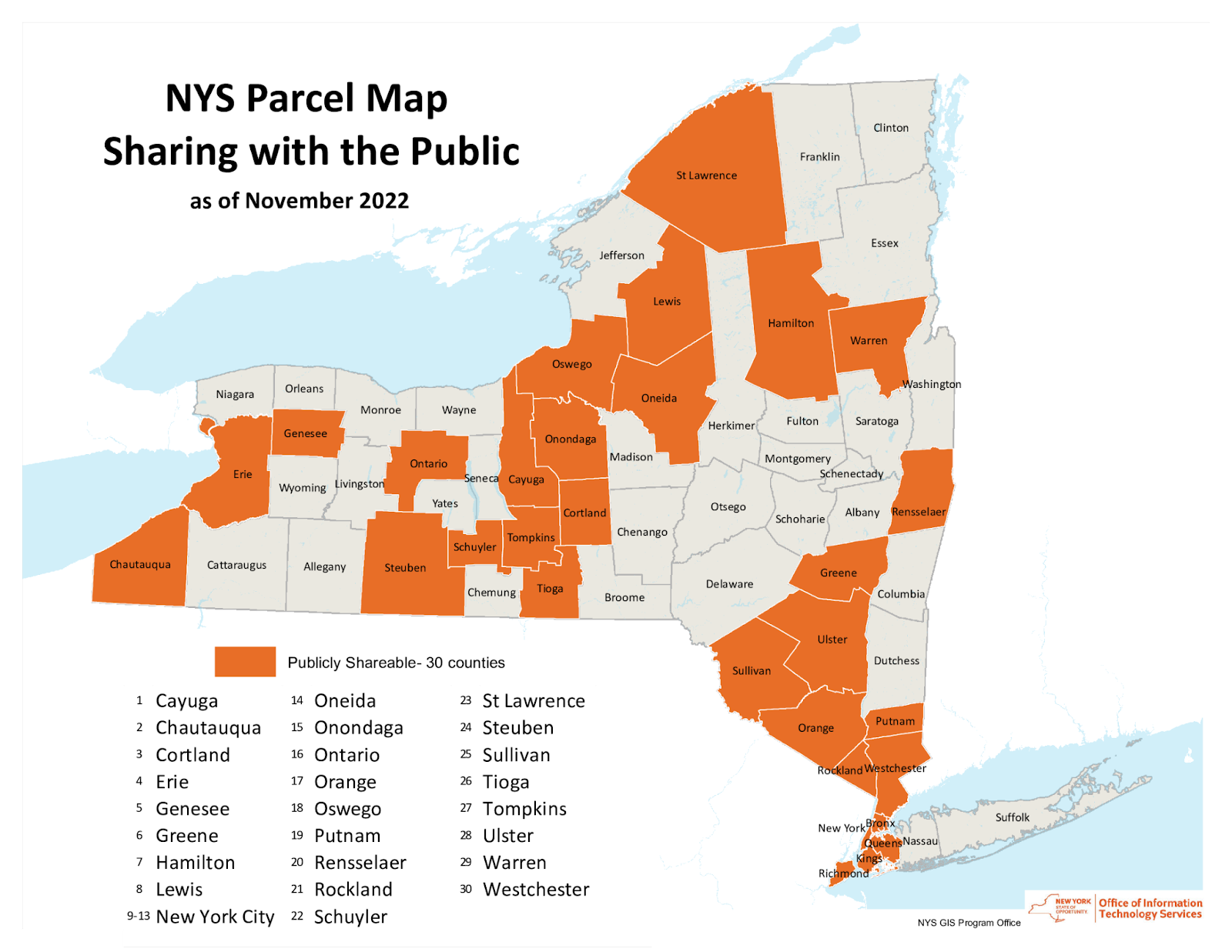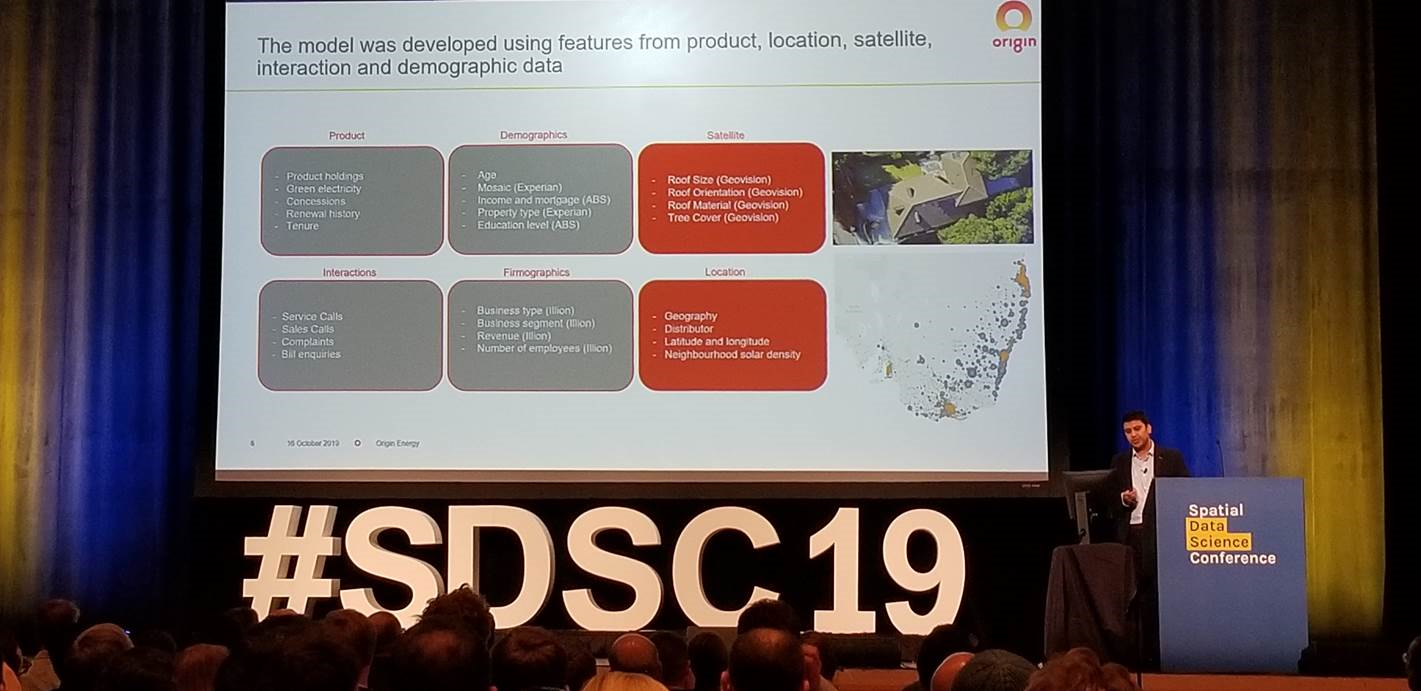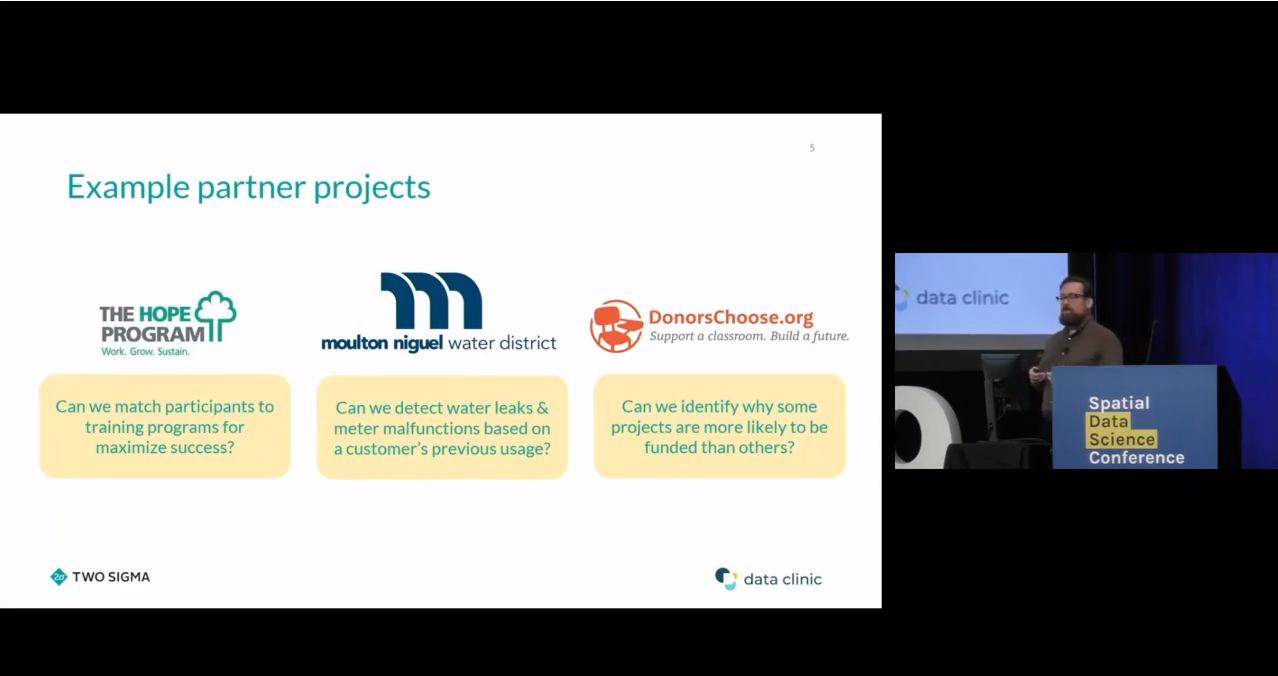Half of New York’s Counties now make parcel data available for free through Open Data efforts though barriers in specific governments still need to be overcome before statewide data is available
Not too long ago, I was communicating with a colleague about how some governments still, in 2023, continue to charge or license tax parcel data. At first, somewhat amazing considering how far the Open Data movement has come over the past 10-15 years across the Empire State. As recently as late 2022, information from the NYS GIS Program Office, which monitors the availability and sharing of tax parcel data statewide, shows that nearly 50 percent of NYS counties are making tax parcel data available for free through various means. Great strides being made perhaps suggesting that one day the barriers prohibiting the sharing of parcel data across the entire will finally be nonexistent? And that the gripes and complaints I was sharing in conversation with my colleague would go away.
Or maybe not.

Since November 2022, this map has been updated and NYS GPO now notes that half of the statewide counties currently share tax parcel data
Issue Was Discussed Early On – What Happened?
In the early days of statewide GIS development (circa 1990s) the GIS community was fortunate to have Bob Freeman, former Executive Director of the New York State Commitee on Open Government (COOG) participating in the growth of the GIS movement. Bob seemingly recognizing and witnessing the formation of a technology which would have a tremendous impact on government records and data. Almost knowing that as part of the new technology, digital versions of data would become just as important or even more valuable than hardcopy format. He was involved in statewide GIS conferences and contributed in many ways. All said and done, he was a staunch advocate of making GIS data available – largely long before the “Open Data” concept was framed.
I was only able to find a few of his opinions searching the COOG archives and ultimately reached out to the current COOG Executive Director Shoshana Bewlay to both bring to her attention of governments still charging for tax parcel data as well as to see if she, or her staff, might be interested in revisiting the issue. I heard back promptly from Kristin O’Neill, Assistant Director who was kind enough to send me a link to all of the COOG opinions (7) which included “GIS”. The links to all of the GIS-related opinions are below which can either be read through in its entirety or skimmed-over. There is a lot here some of which is better interpreted by an attorney. 7507, 11230, 13575, 14366, 15058, 15695, 19246. Looking back, I’m not sure why I thought the issue had gone further along in the legal system and had been resolved to a more definitive degree. But these few opinions suggest otherwise.
More than once, COOG responded to the question/issue of an individual or organization questioning the basis of a government organization either selling or licensing tax parcel data. And in general, each time, the COOG response – or opinion – was the same noting that electronic records (digital) records are no different than hardcopy records and should be made available at the cost of duplication. (Keeping in mind original Freedom of Information Law (FOIL) costs of duplication were originally based on hardcopy records (i.e., for example 25-cents per page) and did not/does not have specific rates for digital data duplication. Today, staff time, tapes, etc., can be included in the charge. However, since COOG opinions are advisory in nature only in context of FOIL, the early inquiries did not result in any formal legal challenge being launched on any level against any entity with regard to the selling of tax parcel data. Suffolk County early on became involved in litigation on licensing/copyright issues (referenced in one of the opinions) which is still in place today. But by the late 1990s, the selling of tax parcel data was in place and had become business as usual. It seems the geospatial community is no further along in “the challenge” to the selling or licensing of tax parcel data than we were some thirty years ago.

 I had the opportunity to attend the
I had the opportunity to attend the 
